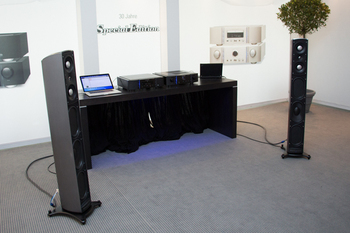My subjective experience with playing around with the room acoustics is not the same. The effect of changing a speaker's toe-in is very obvious on measurements, and it can be heard. But how do I know what to expect from say - a reflection off the back wall arriving 12 ms after the direct sound with a level of -15 dB? How does that sound? What should I be expecting?
Hi, if you are interested fooling around with this kind of stuff see here
https://www.diyaudio.com/community/...practical-tips-and-tricks.406608/post-7535307
In short, if you expose yourself to how reflections sound like you have a chance to actually hear them and have an opinion about it. And to do this you'd need to figure out some listening experiments and I've posted some behind the link for starters.
If you really are curious and start to do listening tests, that might seem crazy to family members and neighbours, you'll find out it's possible to hear a reflection, and then just by turning your head or move a little to mute it. Looking at it might mute it, while turning your head exposes it!
What's the takeaway? you can npw stat reasoning with hour perception. For example, if you can't hear it does it still affect somehow perceptually? is it better to hear it or not? If it changes with head position for example, where did it go, why don't I perceive it as it supposed to be still there as the room and speaker didn't move? Point is, you have now a chance to actually listen this stuff and form an opinion about it, as already said, start reasoning with your own perception.
Basically it's all just developing listening skill, putting your mind on what you perceive, get to understand some of your own auditory system which is very important in my opinion, only when you understand what you perceive you can now optimize your system in your room. I like to think what we perceive is what our own auditory system lets into existence into our conscious mind we think with. Of course, the room and speakers matter but only through adjusting them to align with your auditory system, in your reality of audio in your room!

I think we all do this naturally already, but really paying attention, doing listening exoeriments and reasoning on them is the key.
Details of singular reflection like -15db at 130deg azimuth with 12ms delay are meaningless in a way, easy to understand reading them, but unless you can actually hear them you do not know if they are useful or not, and in which context, and whether you like it or not, and whether it happens or not with ypur systrm. What if you have only -14db and only 11ms and it's 180deg instead of 130deg, what it supposed to do, should it disappear or just get quieter or how it should be perceived?? is it better or worse, or does it matter at all in your room with our speakers and what you want to hear? Is it something you want to deal with anyway, why not just listen to music?

The details are useful to point into right direction, but eventually you'd have to have opinion about perception to know if it was what you are looking for or not.
Improving listening skill is a way to figure out all of this, by yourself in your context. This is something no amount of written words can transfer, because they do not come with perceived audio experience, which you must figure out yourself. At least, this is my opinion about the stuff, does it make sense?
And yes, ~constant highish directivity with proper toe-in seems to be one important thing for good sound to me, it makes the sound quite stable with the time intensity trading. By stable I mean the sound doesn't change (spectrally or spatially) too much with changing listening position, which makes it easy to listen to as it is not changing all the time with movement like in a worst case it could. As Duke said, phantom center stays pretty much at the center no matter where in room I'm listening, it doesn't collapse to nearest speaker like with no toe-in and no directivity. Another thing with smooth directivity is that listening axis can be anything always sounding good and now toe-in can be optimized for spatial effects of sound in main listening position, how the room sounds like beyond the "direct sound". Regarding which I think there is two perceptions of spatial sound just from our own auditory system, and in my experience toe-in supports the other (Griesinger stream separation) while no toe-in supports the other (no stream separation). These two are perceptually very different and basically need bit different optimization from room and speakers depending which one is preferred, ideally one would optimize for both.

 suesskindaudio.de
suesskindaudio.de





